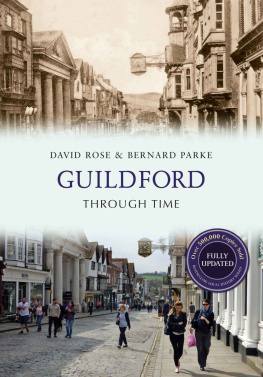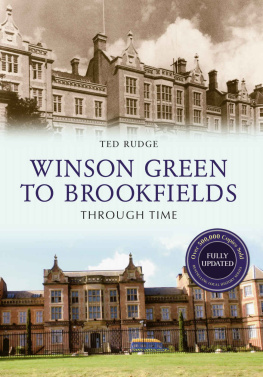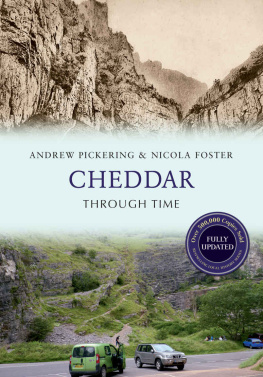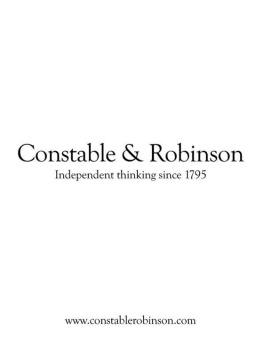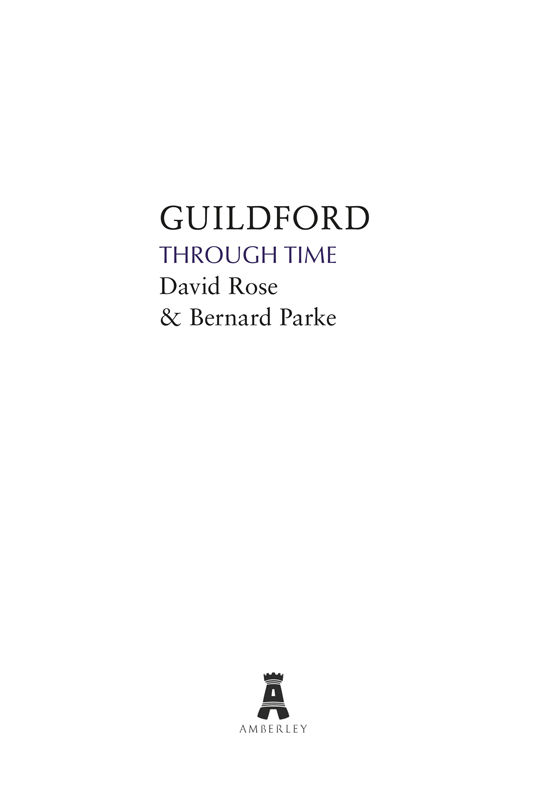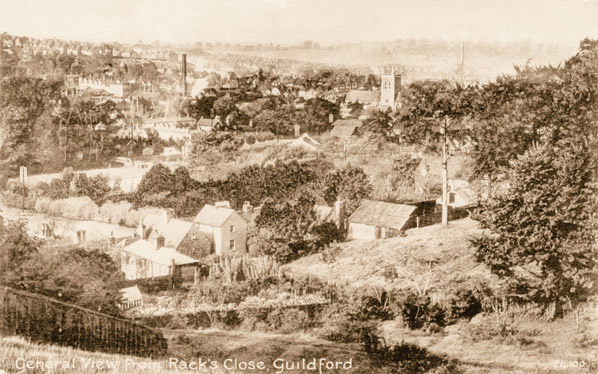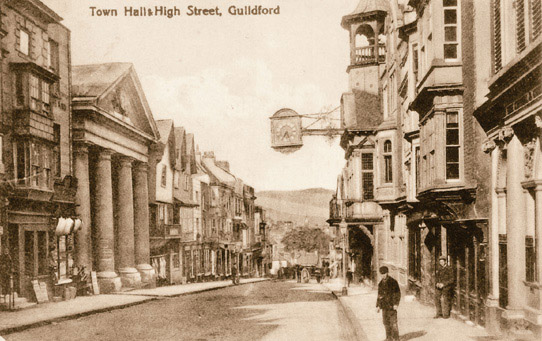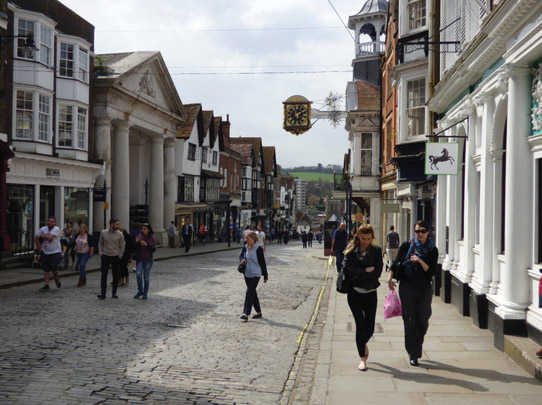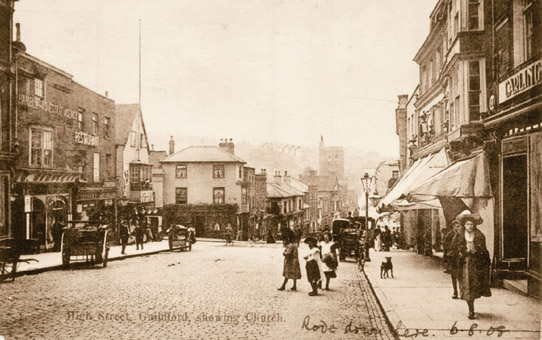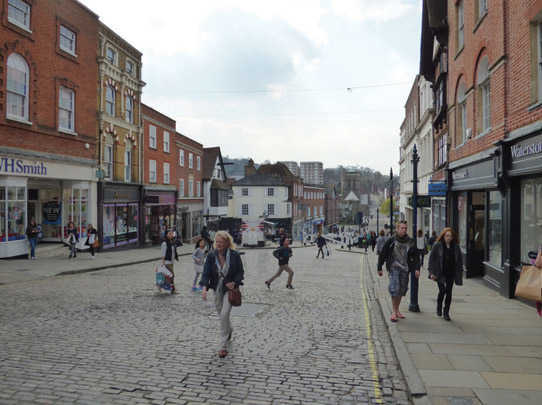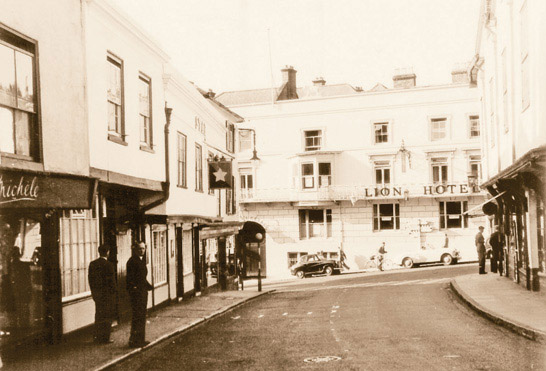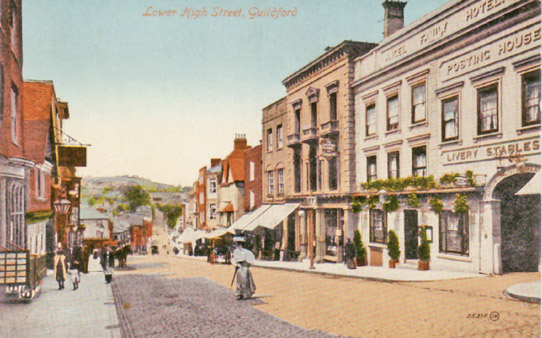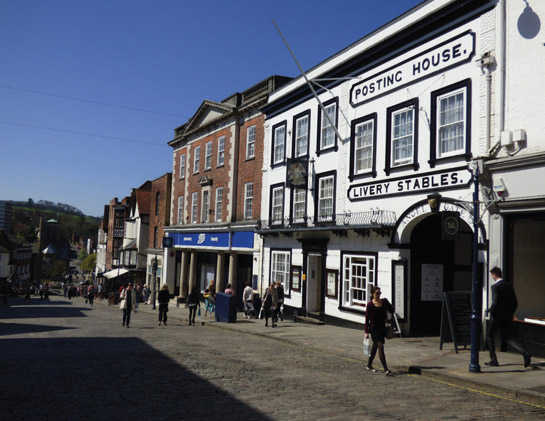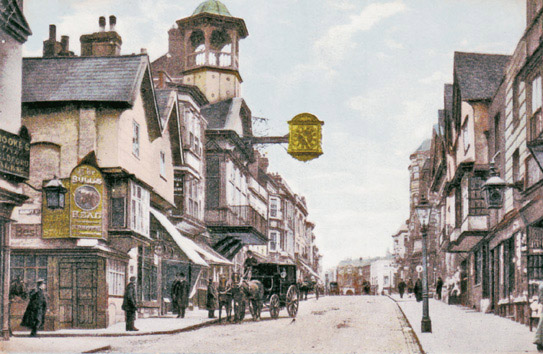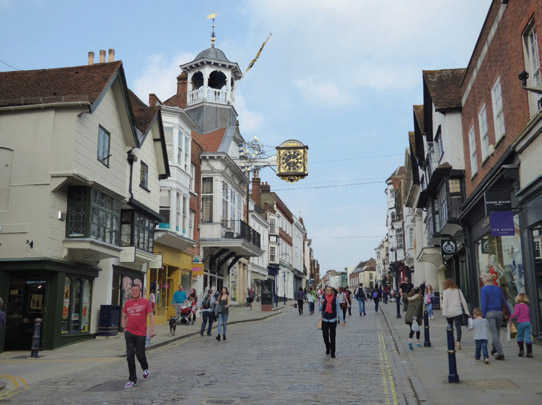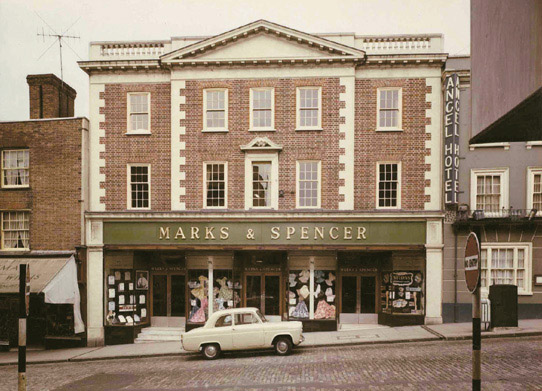First published 2009
This edition published 2015
Amberley Publishing Plc
The Hill, Stroud, Gloucestershire, GL5 4EP
www.amberley-books.com
Copyright David Rose & Bernard Parke, 2009, 2105
The right of David Rose & Bernard Parke to be identified as the Authors of this work has been asserted in accordance with the Copyrights, Designs and Patents Act 1988.
ISBN 9781445650159 (PRINT)
ISBN 9781445650166 (eBOOK)
All rights reserved. No part of this book may be reprinted or reproduced or utilised in any form or by any electronic, mechanical or other means, now known or hereafter invented, including photocopying and recording, or in any information storage or retrieval system, without the permission in writing from the Publishers.
British Library Cataloguing in Publication Data.
A catalogue record for this book is available from the British Library.
Typesetting by Amberley Publishing.
Printed in the UK.
Contents
Introduction
What would all those people who knew Guildford in the early 1900s say if they could see the town today? How much of it would they recognise straight away? What aspects would they find completely bewildering, as certain parts have changed beyond recognition?
Over the past 100 years Guildford has grown considerably, from a medium-sized market town to what is now a regional centre of the south-east of England.
If a Guildfordian of the Edwardian era could walk the same streets today he would obviously recognise the Guildhall and its famous clock. Hed find the attractive Castle Grounds very much unaltered. A stroll along the River Wey to St Catherines and the meadows beside Shalford Park would be mostly familiar. Buildings such as the Royal Grammar School and St Marys, St Nicolas and Holy Trinity churches would be useful landmarks to indicate where he was.
Of course, there are many other buildings still standing that would look the same, but hed probably be amazed at their use today. For example, the fire station in North Street is now a public lavatory and what was the Bulls Head pub no longer serves up beer but is currently a shop.
If he went to the railway station he wouldnt recognise it at all. Hed lose his bearings in North Street as some fine buildings that once stood on the north side, including the post office and the Borough Halls, have all long gone.
The Friary Brewery has been replaced by the Friary Shopping Centre and if he walked along Onslow Street he wouldnt know where he was. In his day hed have known the cattle market in Woodbridge Road well. Would he believe that on that site now are the police station and the law courts?
Guildford Through Time reflects the changing scenes of Surreys county town. It is the first local history title about the town that uses colour reproduction of its pictures throughout.
Not all the old photos in this book date from the halcyon years of the picture postcard, which lasted from the 1900s to about the 1930s. There are a number of photos taken around the 1950s and 60s when much development was taking place that changed the landscape and skyline of Guildford town centre forever.
In many cases, when taking the today photo, the authors have lined up the view as near as possible to the one in the old photo. But, quite deliberately, this has not been the case with all of them. In some instances it was felt necessary to step back a bit so to speak, to take in a slightly wider view of the scene today so as to include other points of interest.
We hope you enjoy this tour of the town; see how many changes you can spot.
The Guildhall Clock
The symbol of Guildford is the Guildhall clock that has stood over the High Street since 1683. The clock mechanism that is actually inside the building is much older and is attributed to a clock maker called John Aylward. In the older picture the clock is seen with replacement glass dials that were illuminated by gas lights. These did not last long and the original dials were put back in 1898.
Guildford High Street
Blinds have been pulled out on some of the shop fronts, suggesting it was a sunny day when this Edwardian photograph was taken. The shop fronts themselves had heavy wooden shutters, and removing them at the start of the days trading and replacing them in the evening was often a job for junior members of staff. Today Waterstones bookshop occupies the site of a once well-known Guildford ironmonger Carling, Gill & Carling
The Lion Hotel
The Lion Hotel was demolished some sixty years ago, and was replaced by F. W. Woolworth in 1958. That made way for the White Lion Walk Shopping Centre that opened in 1986.
The Angel Hotel
Even buildings like the Angel Hotel have changed down the years. Note the words ANGEL FAMILY HOTEL near the roofline on the photo from the early 1900s. The window frames are also different today. There appears to have been an inn on this site since at least the sixteenth century, and there are a number of ghost stories attached to the Angel!
The Bulls Head Pub
A rather smart horse-drawn carriage is in the older view and several gas lamps can be seen. A lamp on the right hangs above what was then W. Taverners chemists shop. The shop that today occupies the corner of the High Street and Market Street was once the Bulls Head public house. It was a sad day when this pub closed for good in 1988.
Marks & Spencer Then
Marks & Spencer once occupied this building built in the Georgian style. In the early 1960s M&S moved further down the High Street into premises that were once W. E. White & Sons department store.

